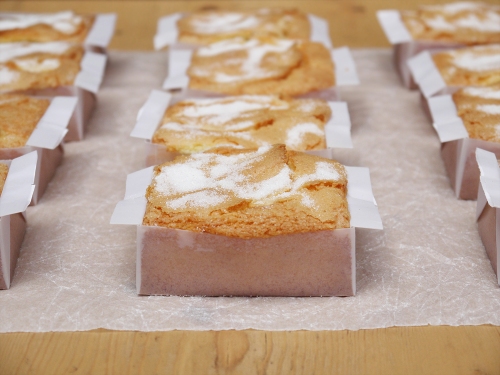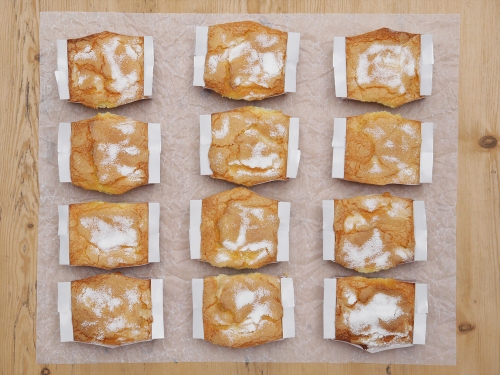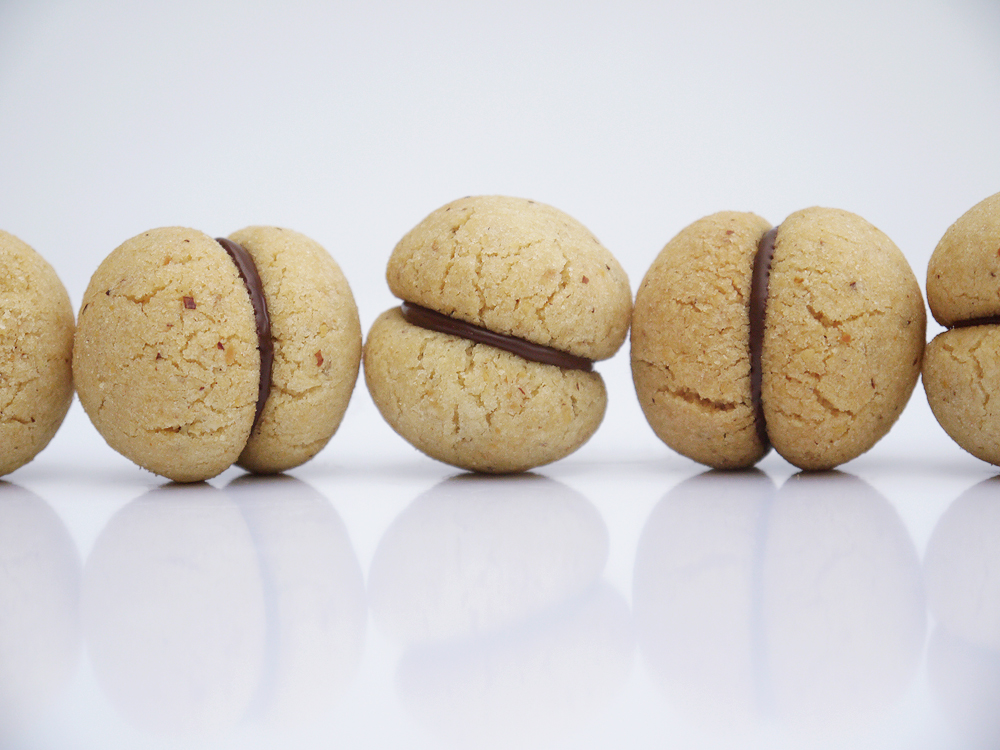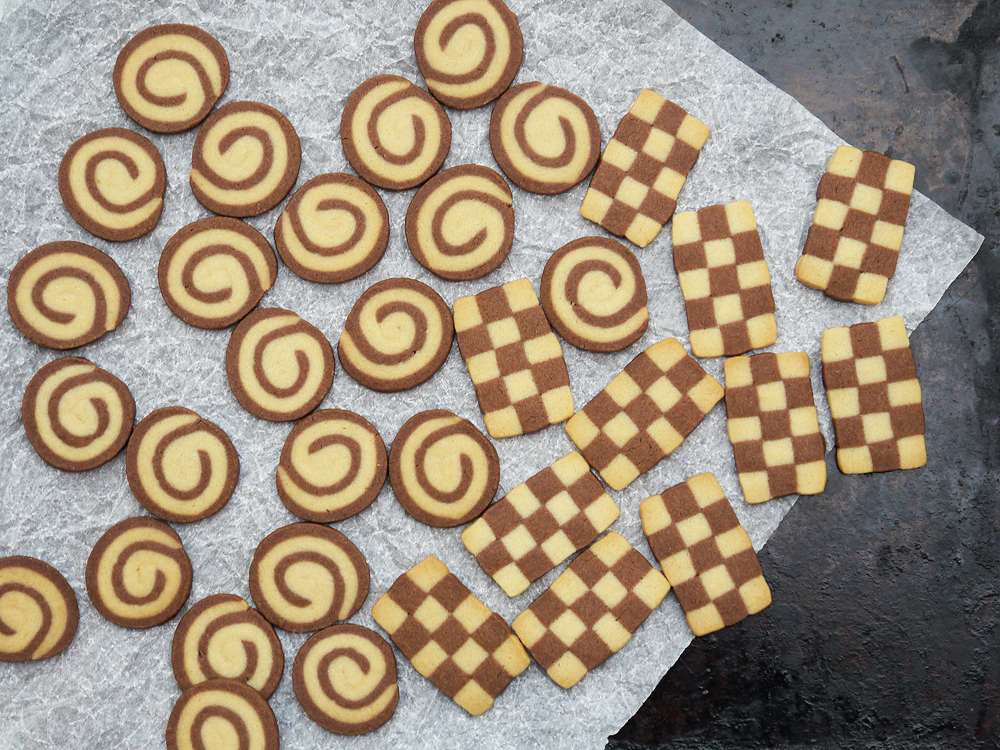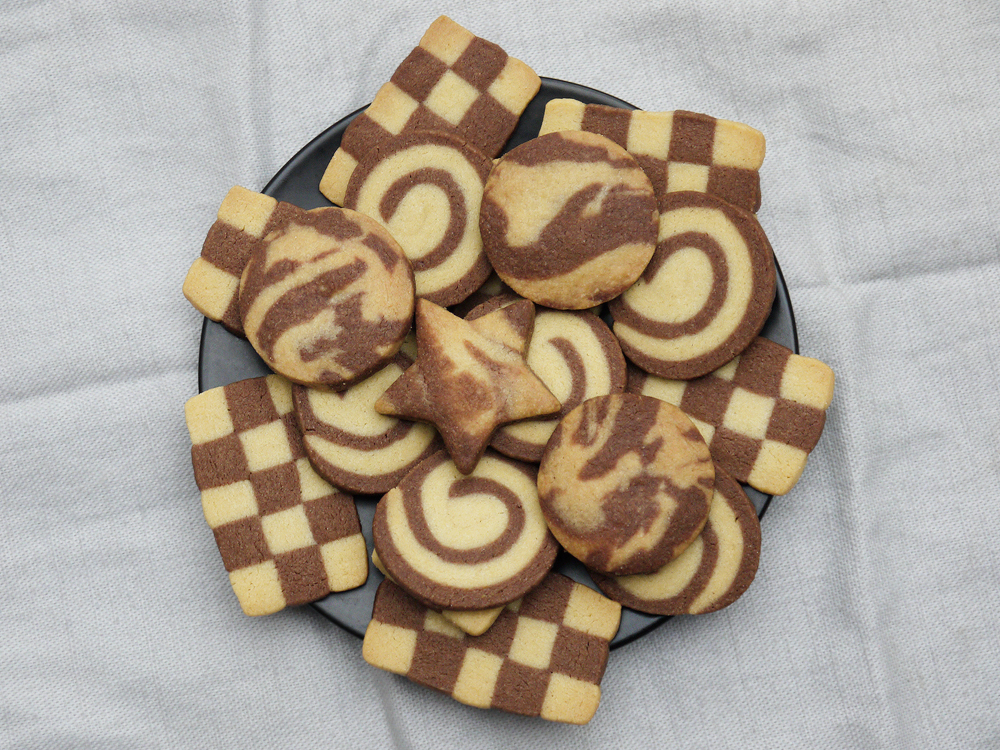Oh, festive breads. I’ve got a thing about them. You see, we’ve got a bit of a history, and frankly it’s not exactly glorious. To be frank, my success in the past can be described as “mixed” and that’s only if we’re being very charitable.
I can make a decent Italian panettone without any problems, but that’s pretty easy. You just form the dough it into a ball and let it rise. But where I start to struggle is with those loaves that need to be elaborately shaped. I do my best to make they look good, but then during the baking they seem to go crazy, and I struggle in making sure that they’re going to keep their shape after a spell in the oven. Last year I tried making a Dutch duivekater, which should look smooth and bronzed with intricate patterns cut into its surface after a spell in the oven. Well, my attempt ended up looking like something from a barbecue rather than a festive loaf fresh from the oven, with the various cut patterns just serving as new ways for the inside of the loaf to make a break for freedom. It did taste great (lightly sweetened, with lemon and cardamom if you’re curious), but it certainly wasn’t a winner in the looks department. It might feature in 12 Days of Baking one year, but it won’t be this year.
However, I’m not one to let a few past culinary wobbles put me off. Maybe it was just a case of trying a different approach? And this is how I came across a recipe for Kletzenbrot and knew I had to try it.

Kletzenbrot means “pear bread”. The name comes from Kletzen, the Austrian German word for pears. When I learned German back in school, we were taught it was die Birnie for a pear, but hey, different ways in different places, and they do it differently in Austria. Indeed, those crazy Austrians, it’s Schlagobers rather than Schlagsahne, and my personal favourite, Paradiser rather than Tomaten, as tomatoes are thought to resemble red apples of the sort that might have been found in the Garden of Eden. Cute, eh?
I’d describe this loaf as something with has more than a passing resemblance to British mince pies, but in the form of a loaf, and not as sweet. You start off by cooking dried pears until soft, then chop them up and mix them with other dried fruit, nuts and spices. I added a good glug of rum, and what do you know, the whole thing really does smell like Christmas in a bowl. That’s to be expected, as by this stage you’ve essentially made rustic mincemeat. Leave it to rest for a day, then the next day you make a rye dough using the water that the pears were soaked in, work in the fruit, and then pray, I mean pray that after shaping that the loaves will bake as intended. Mixing the dough and the fruit is pretty good fun, as it’s stick and really needs you to get in there with your hands to make sure it is all properly combined.
When looking at different recipes, some recipes suggested just shaping and baking, but I came across one that covered the loaf in a sheet of plain bread dough called a Bladl which seems to be a Bavarian/Austrian term for a leaf or a sheet (like paper). You just take a couple of handfuls of the dough before mixing into the fruit, roll it thin, enjoy the fun of trying to get a piece of not-very-stretchy rye dough to stick to your filling and end up looking vaguely neat. Helpfully the recipe makes two loaves, so you can try with one, make all your mistakes, then nail it on the second one. I think the Bladl step is worth doing – it provides protection for the filling, and it avoids one of my pet hates when baking with dried fruit, which are the over-baked raisins and sultanas peeking out the top, waiting to stab the top of your mouth when you eat them. The names does sound a bit like “bladder” which is good for a bit of cheap humour, but we can overlook that part.

I might be making this sound really easy, and making the fruit and the dough was simple. However the Bladl step actually ended up taking quite a bit of practice since this is a low gluten flour with limited desire to be flexible as compared with strong white flour. I rolled it out a couple of times and tried to lift but it kept breaking. Finally I realised that the way to do it was to roll out the Bladl, then dampen the surface of the shaped fruit loaf with water, then lift the loaf on top of the Bladl. Then it was quite easy (well, easy-ish) to gather the dough up the sides and tidy it up. Then flip it over and transfer back to the baking sheet. The key thing to keep in mind is not to completely envelope the filling. The yeast still has its thing to do, and it will rise a bit when it goes into the oven. If you’ve wrapped it tightly in the Bladl dough, you’ll get some big cracks and splits on the surface. If you’ve just done it on the top and sides, there is enough slack to enable to dough to rise and not look too unsightly. Remember you’re really only doing this to protect the interior, rather than worrying too much about it looking neat, and I can live with discrete cracks on the sides!
So having worked hard to make my Kletzenbrot, how does it taste? I was actually really pleased with how it turned out. It’s a bit like fruitcake, but far less less sweet, and with a distinct savouriness from the rye bread component. The texture is dense, so it slices very neatly. It is delicious spread with butter (which has to be salted if you ask me) or otherwise eat it with cheese. I loved it with blue cheese, or with a nice sharp cheddar and a dash of chutney on top. If you’re feeling fancy, try to cut it into very thin slices and drying it out in the oven as some sort of very posh cracker for your festive cheeseboard. Traditionally Austrian? No idea. Delicious? For sure!
To make Kletzenbrot (makes 2 loaves)
For the fruit mixture
• 250g dried pears
• 600ml water
• 100g prunes
• 100g sultanas
• 200g dried figs
• 30g candied orange peel
• 30g candied lemon peel
• 2 teaspoons ground cinnamon
• 1/2 teaspoon ground nutmeg
• 1/4 teaspoon ground cloves
• 60ml rum dark rum
• 125ml apple juice
• 75g whole hazelnuts
• 75g chopped walnuts
For the dough
• 450 g rye flour
• 2 teaspoons dried yeast
• 30 g soft brown sugar
• 2 tablespoons vegetable oil
• 1 teaspoon salt
• 1 teaspoon mixed spice or ground cinnamon
1. Put the dried pears in a saucepan with 600ml cold water. Slowly bring to the boil, the cook gently until the pears are tender (10-15 minutes). Drain and reserve the water. Leave the pears to cool. Keep the water covered in the fridge to use in the bread dough.
2. Chop the cooled pears, prunes and figs into chunks, and finely chop the candied peel. Put everything into a bowl and add the sultanas, spices, nuts, rum and apple juice. Mix well, cover and leave to rest overnight.
3. The next day, make the dough. Put the flour, yeast, sugar, oil and spice in a bowl. Heat the water from soaking the pears in the microwave until lukewarm, and add enough to make a dough. Don’t add it all in one go to avoid the dough being too sticky, but if you use it all and the dough is too dry, just add more water. Knead the dough for 10 minutes, then cover and leave in a warm place to rest for 2 hours. I made the dough, then took the nipper to football and shopping, so it had nearer 3 hours and seemed all the better for it.
4. Time to make the loaves. Remove 2 handfuls of the dough for the Bladl covering. Add the fruit mixture to the remaining dough and mix well with your hands. It’s going to be a very moist mixture, so be prepared for some mess! Then the mixture onto a generously-floured worktop and form the dough into 2 loaves approximately 10 x 20 cm (just shy of 4 x 8 inches).
5. Preheat the oven to 180°C (355°F). Line a baking sheet with greaseproof paper and rub lightly with vegetable oil.
6. Now make the Bladl. Take one piece of the reserved dough and roll it out thinly until large enough to cover the top and sides of a loaf. Spray or brush the loaf with water, then lift the loaf onto the Bladl. Now bring the dough up the sides of the loaf and trim off any excess, leaving the base exposed. Flip the loaf over, exposed side facing down, and transfer to the baking sheet. Repeat with the second loaf.
7. Prick the surface of the loaves with a fork (be as neat or crazy as you like), then brush them with milk.
8. Bake the Kletzenbrote for around 40 minutes. Keep an eye on them – if they look like they are getting too dark, cover loosely with aluminum foil. Tap them to test if they are done – they should sound hollow. Remove from the oven and allow to cool completely before slicing.

